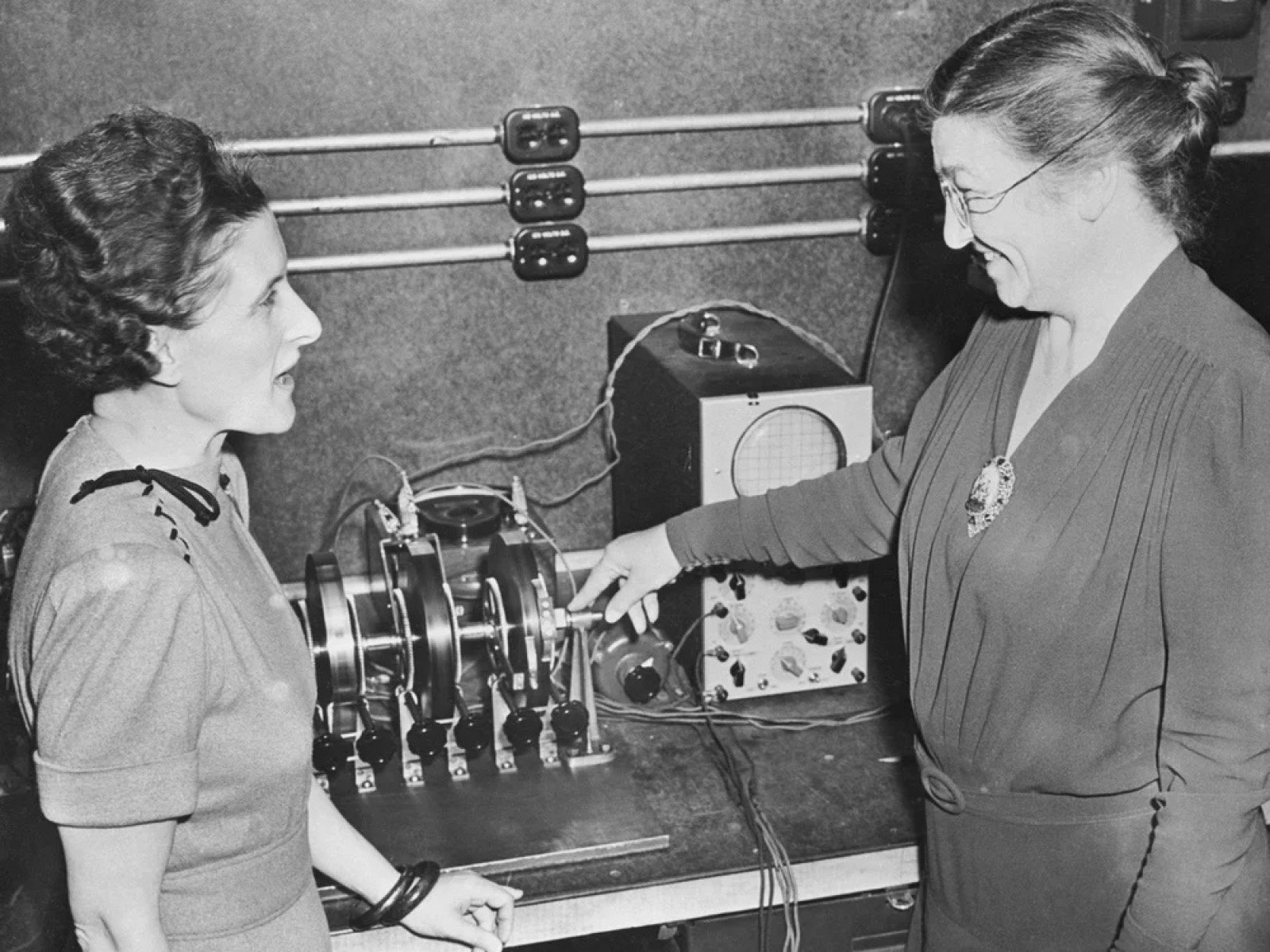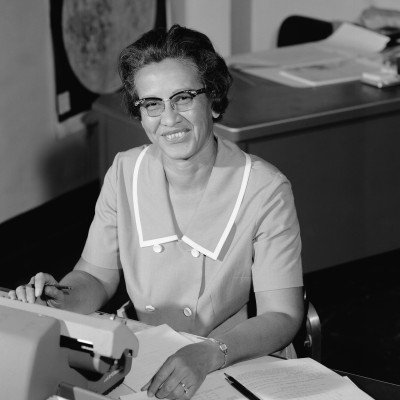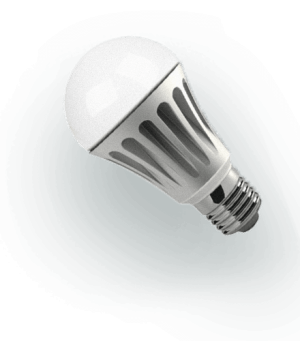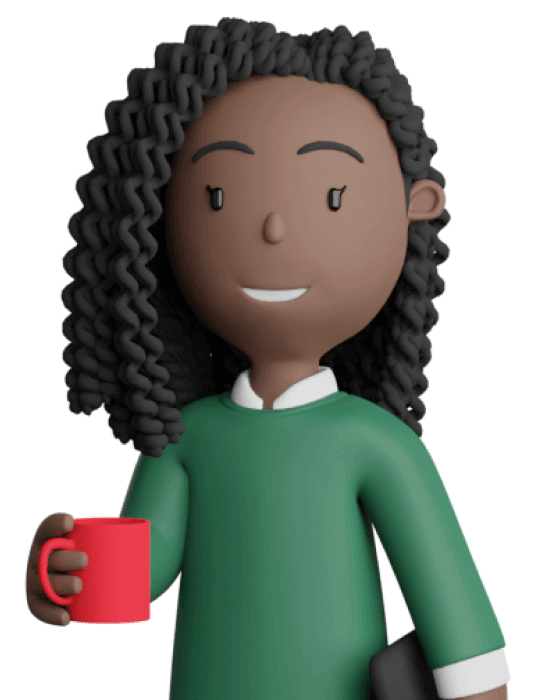Innovations from women in history
Learn about the amazing women in science, technology, engineering, mathematics and invention, who have blazed trails and led to many of today’s technological advancements.

Overview
In this activity students learn about women in history who have made important and influential breakthroughs in STEM fields, but who have often not been credited or recognized for their work. Students will think critically about how they would feel if their accomplishments were credited to another. Finally, in a clue game, students use their detective skills to reveal discoveries women have made.
Part of the Women in STEM, past and present unit.
Instructions
What you'll need
- STEM women in history slideshow
- What did they discover student handout, print one copy per 3-5 students
- Video: Women in science who changed the world (4:55) on YouTube
- Computer or TV with projector
Introduction
Start this activity by asking students to close their eyes while you read: “This person was the brain behind wireless communication and their work was used as the basis for Wi-Fi and Bluetooth technology used today. During WWII, they discovered 'frequency hopping' so that they could prevent the bugging of military radios. Now imagine what this person looks like”.
Have students describe what they think this person was like. Invite them to be open about any assumptions that pop into their head, without judgement, and take note of them.
STEM women in history slideshow
- Now pull up the STEM women in history slideshow and at slide 2 reveal the picture of Hedy Lamarr and share further information about Hedy:
- Austrian-born American actress and inventor, starring in several movies in Europe and Hollywood, starting in 1933.
- At the start of World War II, she worked with George Antheil to invent a radio guidance system for torpedoes that used spread spectrum and frequency hopping technology to avoid radio jamming. It was patented, but not used during the war. The US navy ignored the patent and used their work to develop other technologies.
- Lamarr also designed an improved traffic stoplight and a tablet that would dissolve in water to make a flavoured carbonated drink.
- Lamarr also was the first woman to receive the Invention Convention's BULBIE Gnass Spirit of Achievement Award, known as the "Oscars of inventing".
- At slide 3, have students reflect on the fact that throughout history, women mathematicians, engineers and scientists have led or helped some of the most important scientific discoveries and achievements in history. But their roles and accomplishments were often left out or credited to men.
- Ask students to discuss why they think this has happened, how it would make them feel, and what they think should be done to correct these mistakes.
- Explain that often, girls were not given education on par with boys, were barred from universities or associations, and left out of jobs or the credit for their work was taken by male co-workers or supervisors.
- It was even more challenging for Black women and other women of colour, who faced even more barriers to education.
- The "Matilda Effect”, named after Matilda Joslyn Gage, describes the bias against acknowledging the achievements of women scientists and giving credit for their work to their male colleagues.
- At slide 4, watch the video Women in science who changed the world (4:55) on YouTube.
- At slide 5, have a class discussion to reflect on the women who are featured in the video.
- At slide 6, share that annually February 11 is the UN International Day of Women and Girls in Science, which is meant to recognize and promote women in science, technology, engineering and math (STEM).
- At slide 7, share that annually March 8 is International Women’s Day to celebrate the social, economic, cultural and political achievements of women.
- Now working in small groups of 2-3 students, hand out one copy of the What did they discover student handout. Explain that you will show students a slide with a clue about a discovery or invention by a woman in history. Students then look at the possible answers on the handout and write the name of this women in the column beside the discovery or invention.
- At slide 8, read out the clue “Maria Telkes was born in 1900 and was an inventor, biologist and engineer. Her work relied on the sun’s energy. What did she invent?” Ask students to make their selection writing Maria Telkes next to the guessed discovery. Then at slide 9, review the information about Maria.
- Continue the discovery game to slide 23, finishing at Eunice Foote.
- Now reveal the correct answers:
- Solar heating system – Maria Telkes
- Nuclear fission – Lise Meitner
- Electric refrigerator – Florence Parpart
- Cure for leprosy – Alice Ball
- Aerodynamics research – Mary Jackson
- Analytical machine – Ada Lovelace
- The Clarke calculator – Edith Clarke
- The greenhouse effect – Eunice Foote
- At slide 24 remind students that science and math is for everyone, and that creativity and play are important parts of scientific discoveries and inventions. STEM jobs continue to grow in number, and there are many opportunities for everyone to explore.
Modify or extend this activity
- Proceed to the next activity in this unit: Eunice Foote, greenhouse effect and climate change.
- Individually or in pairs, have students choose a woman in history who contributed to scientific discoveries, and make a poster to share with others.
Curriculum Fit
Social Studies 8 -10
Big idea
- Human and environmental factors shape changes in population and living standards. (Gr. 8)
- Emerging ideas and ideologies profoundly influence societies and events. (Gr. 9)
- The development of political institutions is influenced by economic, social, ideological, and geographic factors. (Gr. 10)
- Historical and contemporary injustices challenge the narrative and identity of Canada as an inclusive, multicultural society. (Gr. 10)
Content
- Scientific and technological innovations (Gr. 8)
- Political, social, economic, and technological revolutions (Gr. 9)
- Environmental, political and economic policies (Gr. 10)
- Discriminatory policies and injustices in Canada and the world (Gr. 10)
- Advocacy for human rights (Gr. 10)
Curricular Competencies
- Use Social Studies inquiry processes and skills to ask questions; gather, interpret, and analyze ideas; and communicate findings and decisions (Gr. 8-10)
Science 9
Big idea
- The biosphere, geosphere, hydrosphere, and atmosphere are interconnected, as matter cycles and energy flows through them. (Gr. 9)
- Energy is conserved, and its transformation can affect living things and the environment. (Gr. 10)
Content
- Matter cycles (Gr. 9)
- Sustainability of systems (Gr. 9)
- Local and global impacts of energy transformations from technologies (carbon dioxide output) (Gr. 10)
Curricular Competencies
Questioning and Predicting
- Demonstrate a sustained [intellectual - Gr. 10]curiosity about a scientific topic or problem of personal interest. (Gr. 9-10)
Planning and Conducting
- Select and use appropriate equipment, including digital technologies, to systematically and accurately collect and record data. (Gr. 9-10)
Evaluating
- Evaluate their methods and experimental conditions, including identifying sources of error or uncertainty, confounding variables, and possible alternative explanations and conclusions (Gr. 9-10)
Career Education 8 & 9
Big ideas
- Reflecting on our preferences and skills helps us identify the steps we need to take to achieve our career goals. (Gr. 8-9)
- Our career paths reflect the personal, community, and educational choices we make. (Gr. 8-9)
Content
Personal Development
- Self-assessment for career research (Gr. 8-9)
Connections to Community
- Local and global needs and opportunities (Gr. 8-9)
Curricular Competencies
- Question self and others about how individual purposes and passions can support the needs of the local and global community when considering career choices. (Gr. 8-9)
- Recognize and explore diverse perspectives on how work contributes to our community and society. (Gr. 8-9)
- Appreciate the value of a network of resources and mentors to assist with career exploration. (Gr. 8-9)
Career Life Education 10 (CLE)
Big ides
- Career-life choices are made in a recurring cycle of planning, reflecting, adapting, and deciding.
Content
Career-life development
- Self-assessment and reflection strategies
Connections to Community
- Inclusive practices, including taking different worldviews and diverse perspectives into consideration
Curricular Competencies
Examine
- Examine the influences of personal and public profiles on career-life opportunities
Experience
- Identify career-life challenges and opportunities, and generate and apply strategies
Initiate
- Explore and reflect on career-life roles, personal growth, and initial planning for preferred career-life pathways.
Assessments
See the Women in STEM, past and present unit for a marking rubric to help assess student success in all activities in this unit.
General observations:
- Assess students’ engagement in critical thinking questions and class discussions.
- Assess students’ group work co-operation and collectively together.
- Assess students’ understanding of the challenges that many historical women in STEM faced.
- Optional: Refer to the rubric evaluation tool created for this unit
Teaching Notes
These teaching notes provide more information on the following topics:
- Historical women in STEM
- Celebrate women and girls in your classroom
Historical women in STEM
Check out the following links to learn about the historical achievements of women in STEM:
- 10 women in STEAM who changed the world
- The untold history of women in science and technology
- Women scientists whose discoveries were credited to men
According to Viterbi Conversations in Ethics, a forum for discussing engineering ethics published by the Viterbi School of Engineering at the University of Southern California, some examples of women’s work being credited to men include:
- Lise Meitner discovered what is now known at the Auger effect, two years before the same effect was discovered by Pierre Victor Auger. She also worked with Otto Hahn to discover nuclear fission, for which Hahn won the Nobel Prize in Chemistry in 1944.
- In the 1970s, Vera Rubin discovered dark matter, but her work was claimed by her coworker Kent Ford.
- Alice Ball discovered the cure for leprosy, but her work was not recognized for almost 90 years.
According to “Erasing women from science? It is called the Matilda Effect” accessed on JSTOR Daily, a publication that provides analysis on current events, research and ideas:
- Marie Curie was rare in the sense that she was one of few women whose accomplishments were recognized in her time.
- For many women, claiming credit for their inventions was difficult, because of limited social and financial ability meant that they could rarely reap the benefits of their work or fully exercise their inventive powers.
Here is a list of what the History Channel calls Nine Groundbreaking Women Inventors:
- 1880, Maria E Beasley, the life raft
- 1885, Sarah E. Goode, fold-out bed
- 1886, Josephine G. Cochran, dishwasher
- 1893, Margaret A. Wilcox, car heater
- 1948, Bessie Virgina Blount, feeding tube
- 1966, Stephanie L. Kwolek, Kevlar
- 1969, Marie Van Brittan Brown, home security system
- 1988, Patrica E. Bath, cataract treatment
- 1991, Ann Tsukamoto, stem cell isolation
Celebrate Women and Girls in your classrooms:
- February 11 is International Day of Women and Girls in Science
- March 8 is United Nations International Women’s Day to celebrate the social, economic, cultural and political achievements of women.







